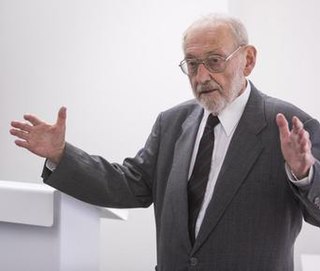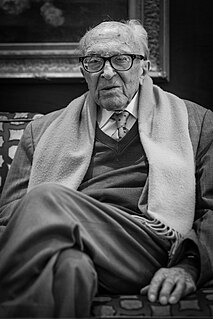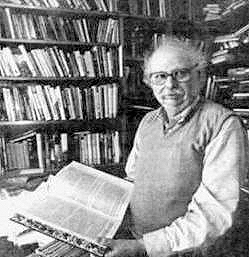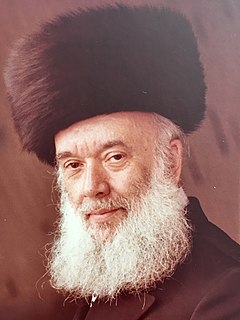 W
WOdette Abadi was a French physician, and member of the Resistance during World War II (WWII). She was a co-founder of the Réseau Marcel which saved more than 500 Jewish children from death during The Holocaust. Although she was arrested and tortured by the Gestapo, she refused to divulge the locations of the hidden Jewish children and was sent to two concentration camps. After Bergen-Belsen concentration camp was liberated in 1945, Abadi continued her profession as a doctor, with a focus on tuberculosis.
 W
WMiriam Akavia also Matylda Weinfeld was a Polish-born Israeli writer and translator, a Holocaust survivor, and the president of the Platform for Jewish-Polish Dialogue.
 W
WJean Améry, born Hanns Chaim Mayer, was an Austria-born essayist whose work was often informed by his experiences during World War II. His most celebrated work, At the Mind's Limits: Contemplations by a Survivor on Auschwitz and Its Realities (1966), suggests that torture was "the essence" of the Third Reich. Other notable works included On Aging (1968) and On Suicide: A Discourse on Voluntary Death (1976). He first adopted the pseudonym Jean Améry in 1955. Améry took his own life in 1978.
 W
WAbraham Asscher was a Dutch Jewish businessman from Amsterdam, a politician, and a leader of his community who attained notoriety for his role during the German occupation of the Netherlands (1940–1945).
 W
WMaurice Blik is a British sculptor and past President of the Royal British Society of Sculptors. He is known for his figurative male sculpture.
 W
WYehuda Zvi Blum is an Israeli professor of law and diplomat who served as Permanent Representative of Israel to the United Nations from 1978 to 1984.
 W
WBarend "Ben" Bril was a Dutch boxer who competed in the 1928 Amsterdam Summer Olympics in Flyweight boxing, and became an accomplished European boxing referee and judge in the 1960s.
 W
WEdith Bruck is a Jewish Hungarian-born writer, director and Holocaust survivor. She has lived most of her life in Italy and writes in Italian.
 W
WAnnette Chalut is a French physician who was a member of the French Resistance during the Second World War.
 W
WEdmond Debeaumarché was a French postal worker who joined the French Resistance during World War II. For his service Debeaumarché was highly decorated. In 1960 Debeaumarché received the posthumous distinction of being depicted on a postage stamp in the series Heroes of the Resistance.
 W
WJan Dobraczyński was a Polish writer, novelist, politician and Catholic publicist. In the Second Polish Republic between the two world wars, he was a supporter of the National Party and Catholic movements. During the 1939 Nazi–Soviet invasion of Poland, he was a soldier of the Polish Army and member of Armia Krajowa until the end of World War II. Dobraczyński participated in the Warsaw Uprising of 1944. After the war he supported the Polish communists. He was a member of parliament Sejms, as activist of the PAX Association and of the Patriotic Movement for National Rebirth from 1982 to 1985. He held the rank of general in the Polish military.
 W
WLucille Eichengreen was a survivor of the Łódź (Litzmannstadt) Ghetto and the Nazi German concentration camps of Auschwitz, Neuengamme and Bergen-Belsen. She moved to the United States in 1946, married, had two sons and worked as an insurance agent. In 1994, she published From Ashes to Life: My Memories of the Holocaust. She frequently lectured on the Holocaust at libraries, schools and universities in the U.S. and Germany. She took part in a documentary from the University of Giessen on life in the Ghetto, for which she was awarded an honorary doctorate.
 W
WDavid Faber was a Polish Jew who survived nine concentration camps in occupied Poland and Nazi Germany. He was also an award-winning educator and lecturer on the Holocaust.
 W
WMargit Buchhalter Feldman was a Hungarian-American public speaker, educator, activist, and Holocaust survivor. Feldman and her family were placed in a concentration camp in 1944, where her parents were killed immediately. She survived her incarceration after lying about her age, resulting in her being placed in a work camp. She was freed from Bergen-Belsen concentration camp on April 15, 1945. After moving to the United States, she raised a family and became a public speaker, sharing her experience with students until her death.
 W
WHédi Fried is a Swedish-Romanian author and psychologist. A Holocaust survivor, she passed through Auschwitz as well as Bergen-Belsen, coming to Sweden in July 1945 with the boat M/S Rönnskär.
 W
WHeinz Galinski was president of the Central Council of Jews in Germany from 1988 until his death in 1992.
 W
WAbel Jacob Herzberg was a Dutch Jewish lawyer and writer, whose parents were Russian Jews who had come to the Netherlands from Lithuania. Herzberg was trained as a lawyer and began a legal practice in Amsterdam, and became known as a legal scholar also. He was a Zionist from an early age, and around the time of the outbreak of World War II he attempted to emigrate with his family to Palestine. During the war he remained active in Jewish organizations until he was interned, with his wife, in Bergen-Belsen concentration camp, where his legal background and status as a legal scholar earned him a seat on a prisoners' court. After their captors moved them from Bergen-Belsen, he and his wife were later liberated by the Soviets and made it back to the Netherlands, where they were reunited also with their children. He continued his legal practice in Amsterdam, though he traveled to Palestine and was offered an administrative position in newly-founded Israel.
 W
WIstván Irsai was a Hungarian-born Israeli architect and graphic designer.
 W
WLin Jaldati was a Dutch-born, East German-based Yiddish singer. She was a Holocaust survivor, and one of the last people to see Anne Frank. After the war she published an article, "Memories of Anne Frank," in Joachim Hellwig and Gunther Deicke's book, A Diary for Anne Frank. A self-professed socialist, she performed in Yiddish in Russia, China, North Korea and Vietnam from the 1950s to the 1970s.
 W
WThomas Kremer was a game inventor and marketer who acquired the rights to market the Rubik's Cube.
 W
WShaul Paul Ladany is an Israeli Holocaust survivor, racewalker and two-time Olympian. He holds the world record in the 50-mile walk (7:23:50), and the Israeli national record in the 50-kilometer walk (4:17:07). He is a former world champion in the 100-kilometer walk.
 W
WRenate Lasker-Harpprecht was a German author and journalist. She survived the Holocaust, having been imprisoned at Auschwitz and Bergen-Belsen.
 W
WAnita Lasker-Wallfisch is a cellist, and a surviving member of the Women's Orchestra of Auschwitz.
 W
WLadislaus Löb is Professor Emeritus of German at the University of Sussex in England. He is the author of From Lessing to Hauptmann: Studies in German Drama (1974) and Christian Dietrich Grabbe (1996).
 W
WBranko Lustig was a Croatian film producer best known for winning Academy Awards for Best Picture for Schindler's List and Gladiator. He is the only person born in the territory of present-day Croatia to have won two Academy Awards.
 W
WIsraël Chaim "Ischa" Meijer was a Dutch journalist, television presenter, radio presenter, critic and author. He survived the Nazi concentration camp Bergen Belsen along with his parents.
 W
WLéon Meyer was a French freight broker and Radical politician from the port city of Le Havre. He was mayor of Le Havre from 1919 to 1941, and a national deputy from 1923 to 1941. He was Minister of Merchant Marine in 1932–33. As a Jew he was removed from office during World War II (1939–45), and in 1944 was deported and spent 17 months in concentration camps.
 W
WIgor Newerly or Igor Abramow-Newerly was a Polish novelist and educator. He was born into a Czech-Russian family. His son is Polish novelist Jarosław Abramow-Newerly. His grandfather Józef Newerly, was a Czech national, who held a title of Lovtchiy to the court of Tsar Nicholas II of Russia.
 W
WIn the best-known photograph taken during the 1943 Warsaw Ghetto uprising, a boy holds his hands over his head while SS-Rottenführer Josef Blösche points a submachine gun in his direction. The boy and others hid in a bunker during the final liquidation of the ghetto, but they were caught and forced out by German troops. After the photograph was taken, all of the Jews in the photograph were marched to the Umschlagplatz and deported to Majdanek extermination camp or Treblinka. The exact location and the photographer are not known, and Blösche is the only person in the photograph who can be identified with certainty. The image is one of the most iconic photographs of the Holocaust, and the boy came to represent children in the Holocaust, as well as all Jewish victims.
 W
WRabbi Yisroel Moshe Olewski was the rabbi of Radziejów, Poland prior to the holocaust. After the holocaust, he was one of the rabbis of Bergen-Belsen and the Chief Rabbi of Celle. Later, after emigrating to the United States he was the founder of the Gerrer yeshiva in Brooklyn.
 W
WUri Orlev is a Polish-born Israeli children's author and translator. He received the international Hans Christian Andersen Award in 1996 for his "lasting contribution to children's literature."
 W
WBoris Pahor is a Slovene novelist living in Italy who is best known for his heartfelt descriptions of life as a member of the Slovenian minority in pre-Second World War increasingly fascist Italy. as well as a Nazi concentration camp survivor. In his novel Necropolis he visits the Natzweiler-Struthof camp twenty years after his relocation to Dachau. Following Dachau, he was relocated three more times: to Mittelbau-Dora, Harzungen and finally to Bergen-Belsen, which was liberated on 15 April 1945.
 W
WGisella Perl was a Romanian Jewish gynecologist deported to Auschwitz concentration camp in 1944, where she helped hundreds of women as inmate gynecologist without the bare necessities to perform her work. She survived, emigrated to New York and was one of the first women to publicize these experiences in English in her 1948 memoir I Was a Doctor in Auschwitz. She became a specialist in infertility treatment at Mount Sinai Hospital, New York and eventually moved with her daughter to live in Herzliya, Israel, where she died.
 W
WTadeusz Pietrzykowski was a Polish boxer, Polish Armed Forces soldier, and a prisoner at the Auschwitz-Birkenau and Neuengamme concentration camps run by the German Nazis during World War II. He was part of the first mass transport to Auschwitz in June 1940, and was transferred to Neuengamme in 1943. He is remembered as the boxing champion of Auschwitz. Pietrzykowski's life story has been the subject of several books and movies.
 W
WChava Rosenfarb was a Holocaust survivor and Jewish-Canadian author of Yiddish poetry and novels, a major contributor to post-World War II Yiddish Literature. Rosenfarb began writing poetry at the age of eight.
 W
WJosef Rosensaft was a Holocaust survivor who led the community of Jewish displaced persons through the establishment of a Central Committee of Liberated Jews that first served the interests of the refugees in Bergen-Belsen DP camp and then DP camps throughout the entire British sector.
 W
WJudah Samet is a businessman, speaker, and Holocaust survivor. At the age of six, he and his family were taken from Debrecen, Hungary, to the Bergen-Belsen concentration camp, where they spent eleven months. After the Second World War the family immigrated to Israel, where he subsequently served in the Israel Defense Forces and worked as a teacher. He later moved to Canada and then to the United States. In 2018, he was a witness to and survivor of the Pittsburgh synagogue shooting. He is a jeweler and speaker in Pittsburgh, Pennsylvania.
 W
WIsrael Shahak was an Israeli professor of organic chemistry at the Hebrew University of Jerusalem, a Holocaust survivor, an intellectual of liberal political bent, and a civil-rights advocate and activist on behalf of both Jews and Gentiles (non-Jews). For twenty years, he headed the Israeli League for Human and Civil Rights (1970–90) and was a public critic of the policies of the governments of Israel. As a public intellectual, Shahak's works about Judaism proved controversial, especially the book Jewish History, Jewish Religion: The Weight of Three Thousand Years (1994).
 W
WAranka Siegal is a writer, Holocaust survivor, and recipient of the Newbery Honor and Boston Globe-Horn Book Award, both awarded to her in 1982. She is the author of three books, the best known of which is Upon the Head of the Goat: A Childhood in Hungary 1930-1944, a memoir of her childhood in Hungary before her 12-month imprisonment in the Nazi concentration camps, Auschwitz – Birkenau and Bergen-Belsen.
 W
WAnne-Lise Stern was a French psychoanalyst and Holocaust survivor.
 W
WCeija Stojka was an Austrian-Romani writer, painter, activist, and musician, and survivor of the Holocaust.
 W
WAlina Szapocznikow (Polish: [ʂapɔt͡ʂˈɲikɔf]; sometimes called Szaposznikow; was a Polish sculptor and Holocaust survivor. She produced casts of her and her son's body. She worked mainly in bronze and stone and her provocative work recalled genres such as surrealism, nouveau realism, and pop art.
 W
WJoel Teitelbaum was the founder and first Grand Rebbe of the Satmar dynasty.
 W
WGena Turgel was a Jewish Polish author, educator, and Holocaust survivor.
 W
WSimone Veil was a French magistrate and stateswoman who served as Health Minister in several governments and was President of the European Parliament from 1979 to 1982, the first woman to hold that office. As health minister, she is best remembered for advancing women’s legal rights in France, in particular for the 1975 law that legalized abortion, today known as Loi Veil. From 1998 to 2007, she was a member of the Constitutional Council, France’s highest legal authority.
 W
WRabbi Yisroel Aryeh Zalmanowitz (1916-2003) was a Rosh Yeshiva in Bursha before the Holocaust. After the Holocaust he was one of the Rabbis of Bergen-Belsen. Later in Israel, he was Chief Rabbi of Acre and the Rabbi of Kiryat Sanz.
 W
WRabbi Shlomo Zev Zweigenhaft was Rosh Hashochtim of Poland prior to the Holocaust. After the Holocaust, he was Chief Rabbi of Hannover and Lower Saxony. After emigrating to the United States he was a Rav Hamachshir and world-renowned for his expertise in all matters related to shechita and was described as the "foremost authority on shechita".